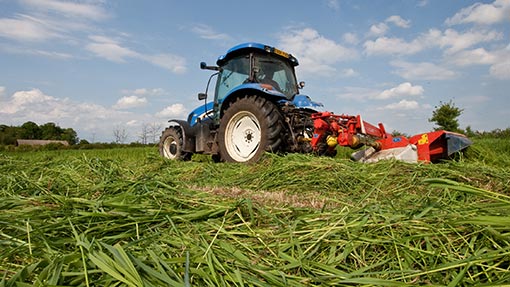Advice on managing early spring grass growth

Grass has barely stopped growing all winter, but farmers are advised to tread carefully to make the most of it when grazing stock or getting an early silage cut.
According to Liz Genever, beef and sheep scientist at EBLEX, farmers need a flexible approach to grassland management this spring.
“The key is to plan ahead and be flexible – how you manage your grass now will affect yields and quality for the rest of the season,” she says.
If grazing, Dr Genever says farmers should choose small groups of sheep or weaned calves and yearlings, as they will do less damage than heavier stock.
For optimum grass yields and quality at this time of year, grass heights should be kept below 6cm for sheep and 10cm for cattle, says Dr Genever. Weekly or fortnightly measuring of grass growth using a sward stick or a marker on your wellies is important to forward plan supply against demand, she adds.
Take our Academy on spring turnout management and earn valuable CPD points
If animals can’t be turned out or grass cut for silage, one way to delay grass growth and prevent knock-on effects on quality later in the season is to postpone nitrogen application, says Dr Genever. But she adds: “Don’t forget about phosphate and potash – after the warm winter, grass will be in need of it.”
Farmers who choose to delay nitrogen application, or opt to take an early cut of silage, must remember to leave one day of growth per 2.5kg/ha of nitrogen applied before cutting it.
“If you’re applying 100kg/ha you need to leave it 40 days, otherwise you’ll get high nitrates in the grass, which can affect fermentation and palatability of the silage,” says Dr Genever.
Nigel Hester, area manager at Yara, says farmers should test their soil nutrient indices before creating a fertiliser schedule.
“Don’t forget sulphur – only 8% of grassland is getting bagged sulphur. It will improve nitrogen use and you will most likely get a yield and quality response. And be patient – wait for the right soil conditions before travelling – or you will end up creating compaction problems,” he adds.
Delaying slurry spreading due to land conditions also means contamination risk is increased when applying to higher covers. Dr Genever says: “If the grass is forward and you have to apply slurry, use a trailing shoe to minimise contamination.”
Slurry storage until later in the season could be an option for some, but this would need to be replaced by applying bagged fertiliser, she adds.
